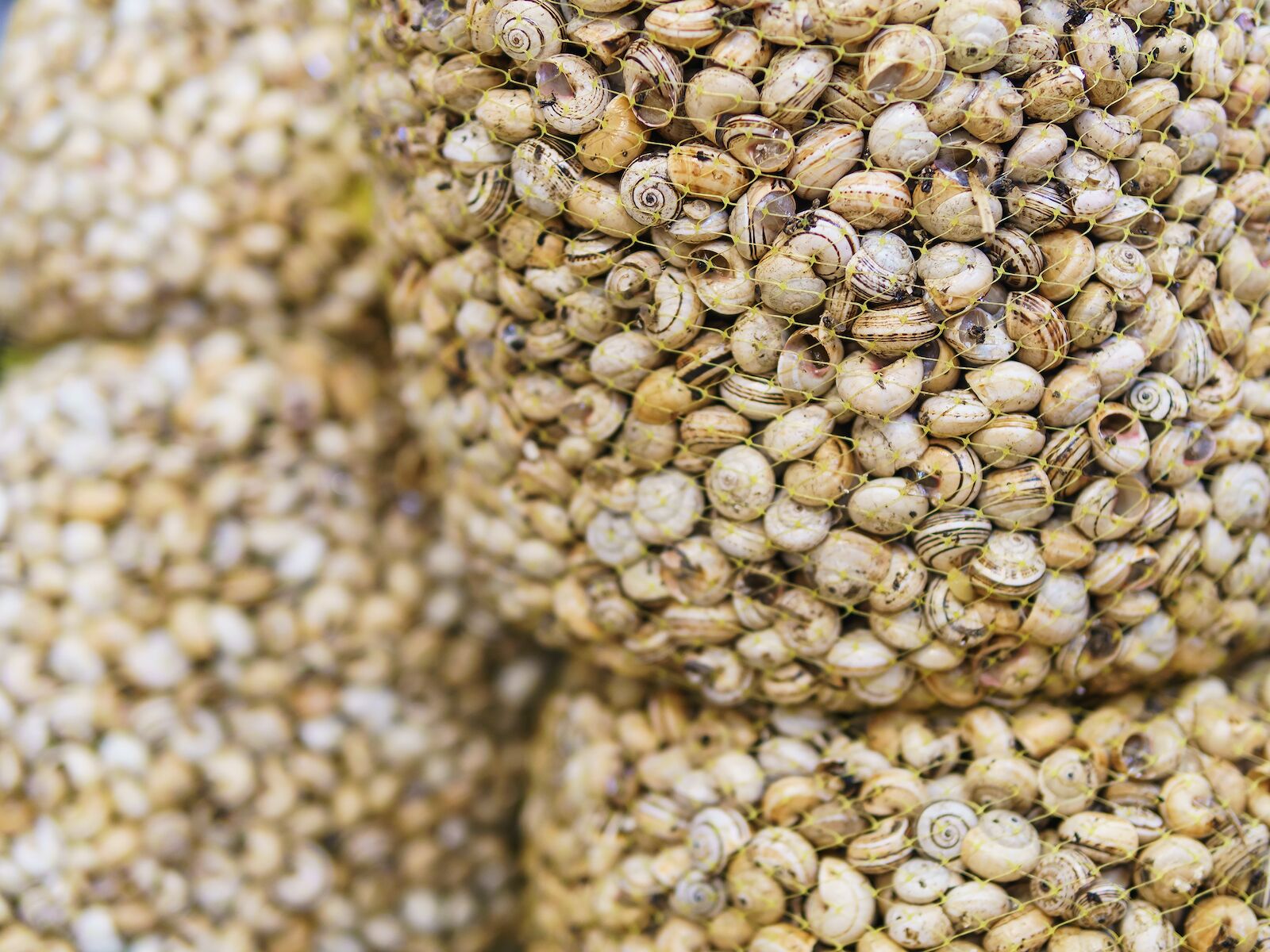The first time I ate snails in Europe was not in France, where golfball-sized escargot are famously sauteed in garlic-parsley butter and served as an hors d’oeuvre year-round, but in Portugal, where snails closer in size to the head of a golf tee are stewed in garlic-oregano broth and served as a summertime snack called caracóis.
My introduction to caracóis was more like an initiation. It was a scorching August afternoon in Lisbon’s South Bay. I’d spent the day nursing Sagres beers on the Costa da Caparica with my friend Filipe, who was hosting me for the week, and his friends Sara and Beatrix, who insisted I try the dish before the week was up, the contents of which they also insisted remain a surprise.

